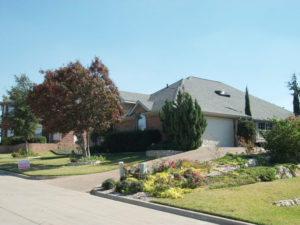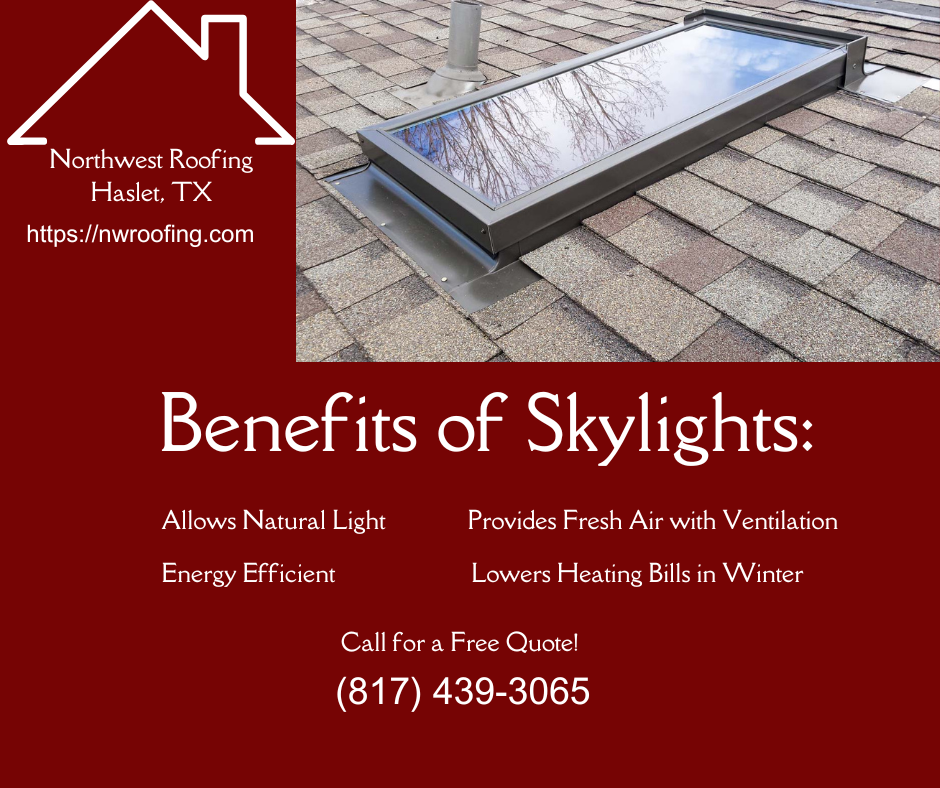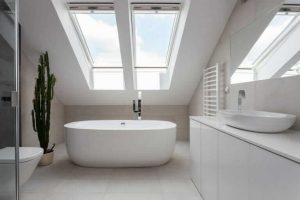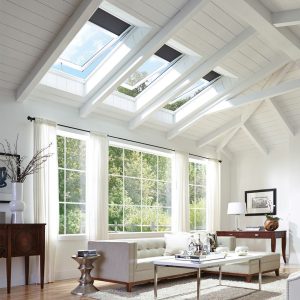The skylight installation guide is a vital resource for our clients. Skylight replacement is an essential aspect of maintaining your home’s natural light and energy efficiency. Let’s dive into the details: 
Types of Skylight Replacements
Fixed Skylights: These skylights are mounted to the roof and do not open for ventilation. They are durable but require regular maintenance.
Tubular Skylights (Solar Tubes): Compact and cost-effective, tubular skylights are ideal for smaller spaces like pantries, hallways, and closets. They capture sunlight through a rooftop dome and transfer it via a reflective tube into your home.
Vented Skylights: These skylights open and close, providing both, light and ventilation. They are excellent for rooms needing extra airflow, such as kitchens, bathrooms, or laundry rooms.
Signs You Need Replacement
Damp or Discolored Ceiling: Stains on the ceiling indicate moisture leakage through the skylight.
Cracked Glass Panes: Damaged glass panes need replacement.
Window Age: If your skylight is around 15 years old, consider replacing it.
Condensation: Excessive condensation inside the skylight warrants attention.
Discoloration: Fading or discoloration may indicate wear.
Cost of Skylight Replacement
The average cost to replace a skylight in the U.S. ranges from $900 to $2,300.
Factors affecting cost include window size, roof pitch, automation features, and glass type.
Replacing only the glass pane is more affordable, while higher-rated or multi-pane glass is pricier.
Benefits of Energy-Saving with Skylights

Northwestern Roofing replaces skylights,
but we do not do new installs.
Daylighting: Skylights allow natural sunlight to enter your living spaces during the day. By reducing the need for artificial lighting, you can decrease energy consumption and save on electricity costs.
Passive Solar Heating: During colder months, skylights let in sunlight, warming up your space. This reduces the need for heating systems, leading to energy savings.

Regulating Indoor Temperatures: Skylights help balance indoor temperatures. They provide warmth when needed and contribute to a comfortable environment without relying solely on heating or cooling systems.
Ventilation: Some skylights are designed to open, allowing for natural ventilation. Properly ventilated spaces release hot air that accumulates near the ceiling, enhancing comfort and reducing reliance on air conditioning.
It’s important to choose energy-efficient skylights based on your local climate and your home’s design. Look for labels such as ENERGY STAR and consider the skylight’s size to optimize its contribution to daylighting and energy efficiency.
Prevent Heat from Skylights in Summer Months
Skylights are wonderful for bringing natural light into your home, but they can also contribute to heat gain during hot summer months. Here are some effective strategies to keep your space cool and comfortable:
Skylight Shades and Blinds: Install blinds or shades specifically designed for skylights. These allow you to control the amount of light and heat entering your home.
Choose reflective or UV-reflective films: These films help cut down on heat transmission while still allowing natural light.
Ventilation and Airflow: Open your skylights strategically during cooler parts of the day (early morning or evening) to allow hot air to escape.
Consider skylights that are designed for ventilation, allowing fresh air to circulate, and preventing heat buildup.

Heat-Resistant Glazing: Choose skylights with heat-resistant glazing. These glazing options can significantly reduce the amount of heat transferred into your living space.
Look for skylights with low-emissivity (Low-E) coatings or other advanced technologies that minimize heat gain.
External Shading Devices: Install external shading devices such as awnings, pergolas, or overhangs. These block direct sunlight from hitting the skylight, reducing heat absorption.
Landscaping Considerations: Adjust your landscaping to provide shade around the skylight area. Plant trees or install trellises strategically to shield the skylight from intense sunlight.
Remember that a combination of these strategies can be most effective. Choose the ones that best suit your home’s design and climate. Enjoy the natural light while keeping your space cool.
Skylights Offer Benefits in Winter Months
Natural Light and Warmth: Skylights allow bright sunlight to enter your home even on cold days. The sun’s natural warmth is trapped inside, keeping rooms cozy and comfortable.
Better Lighting: Skylights enhance interior illumination, reducing the need for artificial lighting during shorter daylight hours.
Energy Savings: By utilizing daylight, skylights help lower electricity costs for lighting. They contribute to passive solar heating, reducing reliance on heating systems.
Mental Health Benefits: Exposure to natural light positively impacts mood and well-being during darker seasons.
Creates a Sense of Openness: Skylights create a sense of spaciousness and depth, making your living spaces feel more open and inviting.
Choosing the Correct Size of Skylight
Selecting the ideal skylight size involves considering several factors. Following are some guidelines to help you make an informed decision.
Room Size and Windows: The optimal skylight size depends on the room’s dimensions, the number of existing windows, and the angle of the roof above.
A skylight that is too large can lead to overheating, while one that is too small may not provide the full benefits of natural light.
Industry Standard
For new in-home skylights: Rooms that have many windows, aim for a skylight size equivalent to 5% of your floor space.
Rooms with fewer windows: Opt for a skylight size equivalent to 15% of your floor space.
Following these measurements ensures energy efficiency while allowing you to enjoy sunlight and fresh air.
Calculating Square Footage: Measure your room’s length and width using a tape measure. Calculate the square footage of your floor by multiplying the length and width. If your room has fewer windows, multiply the square footage by 0.15 (15%). If, your room has several windows, multiply by 0.05 (5%). The resulting number represents the approximate square footage your skylight should be for that space.
Replacement Skylights
If replacing an existing skylight, measure accurately. On the roof, measure the length and width of the existing skylight from where the shingles meet the flashing. Inside, measure the width and length of the drywall around the skylight’s opening. Share these measurements with your contractor or roofer for precise fitting.
Different Types of Skylights
Skylights come in various types, each serving different purposes.
Fixed Skylights: These skylights do not open and provide light from above. Ideal for areas where ventilation is not necessary. Some fixed skylights offer built-in blinds for light control.
Ventilating Skylights (Roof Windows): These skylights open and close, allowing fresh air and light. Perfect for rooms needing ventilation, such as kitchens or bathrooms. Some come with rain sensors for automatic closure during rain.
Tubular Skylights (TDDs): Also known as solar tubes, these are compact and cost-effective. Capture sunlight through a rooftop dome and transfer it via a reflective tube into your home. Great for smaller spaces like hallways, closets, or pantries.
Large Span Skylights: These skylights cover large areas and create a dramatic effect. Usually found in commercial buildings or expansive residential spaces.
Flat Roof Skylights: Designed for flat or low-pitched roofs, providing a sleek, modern look and allowing light into flat-roofed rooms.
Custom Skylights: Tailored to specific architectural designs. Available in various shapes, including arched, domed, pyramid, and more.
Skylight Materials: Skylight panes (glazing) can be made from plastic (acrylic) or glass. Glass glazing offers durability, while plastic glazing is economical but may yellow over time and will need to be replaced.
Choose the skylight type that suits your space, lighting needs, and energy efficiency goals.
Maintenance and Cleaning
Maintaining and cleaning skylights is essential to ensure they continue to bring natural light into your home effectively. Following are some steps to keep your skylights in great condition.
Avoid Harsh Chemicals
Use soapy water or a solution of white vinegar and water for tough grime. Avoid ammonia, alcohol, or petroleum-based cleaning solutions, as they can damage skylight materials.
Schedule to clean your skylights frequently to maintain their clarity and functionality.
Regular Cleaning
Dust and Debris: Regularly remove dust, leaves, and debris from the skylight surface using a soft brush or cloth. Interior and Exterior-Clean both the inside and outside of the skylight for optimal clarity.
Prepare Your Workspace
Move Furniture: Take furniture and decorations out of the room to prevent damage during cleaning.
Floor Protection: Lay plastic tarps or large towels on the floor underneath the skylight to catch water, soap, and dust.
Cleaning from Inside
Extendable Pole: Tie an old rag to the end of an extendable pole or a long-handled mop. Scrub the skylight with the rag and soapy water.
Soapy Water: Mix a few drops of dish soap in a bucket of warm water.
Detail Edges: Use a microfiber cloth to detail the edges and wipe down any drips on the wall below the skylight.
Cleaning from the Outside
Ladder or Extendable Pole: Climb a ladder or use an extendable pole to reach the skylight from the outside. If you are uncomfortable climbing a ladder, hire a cleaning professional to do the work for you.
Remove Dust: Wipe away any dust and debris on the skylight with a dry rag.
Soapy Sponge: Use a soapy sponge to remove dirt and grime. Wipe side-to-side and then top-to-bottom.
Professional vs. DIY
While some repairs (like new caulk) can be DIY, professional installation ensures proper sealing and safety.
Roofing contractors can guide you on the best replacement options for your home.
Remember that skylights enhance natural light, but proper installation and maintenance are crucial. Consult a professional to assess your specific needs and choose the right replacement for your house.
Office: (817) 439-3065 or Mobile: (817) 614-1630


